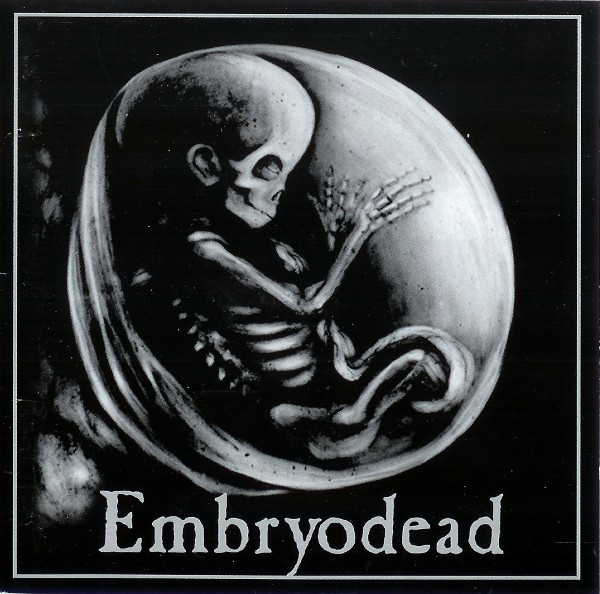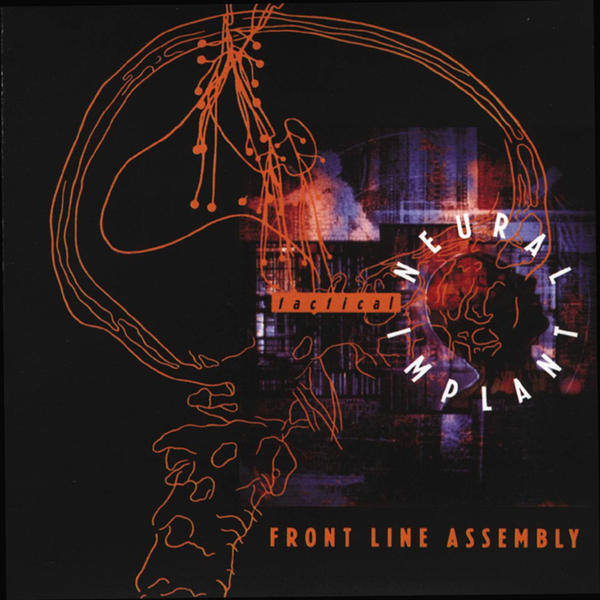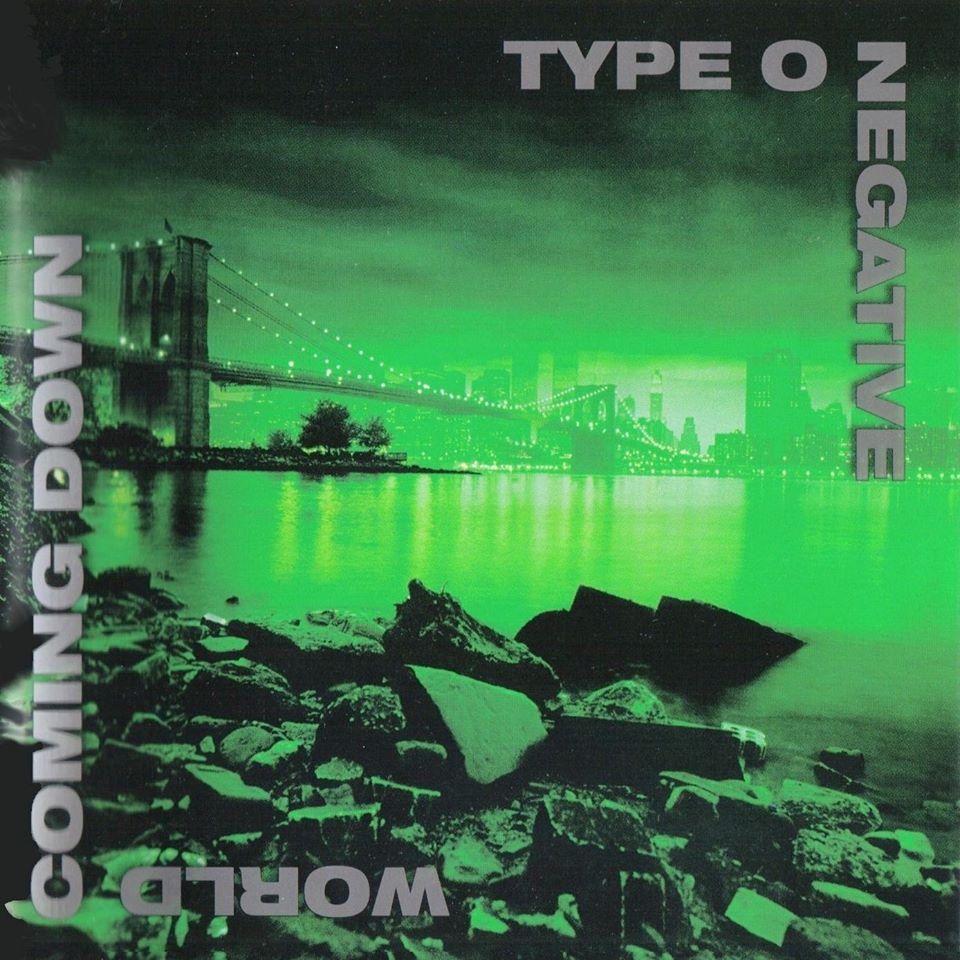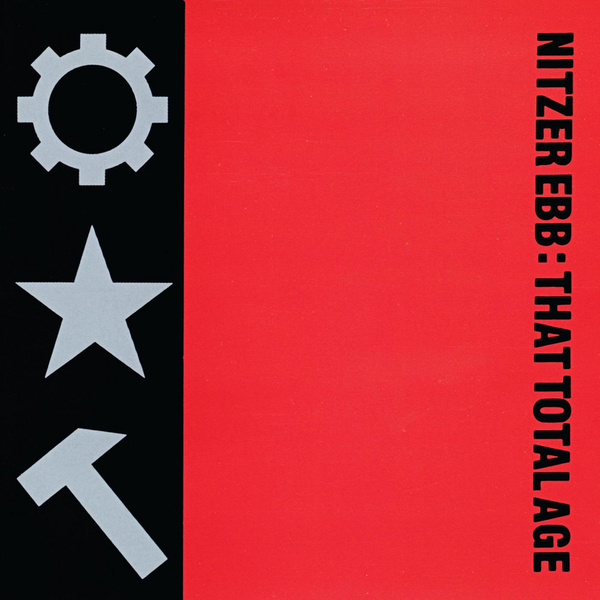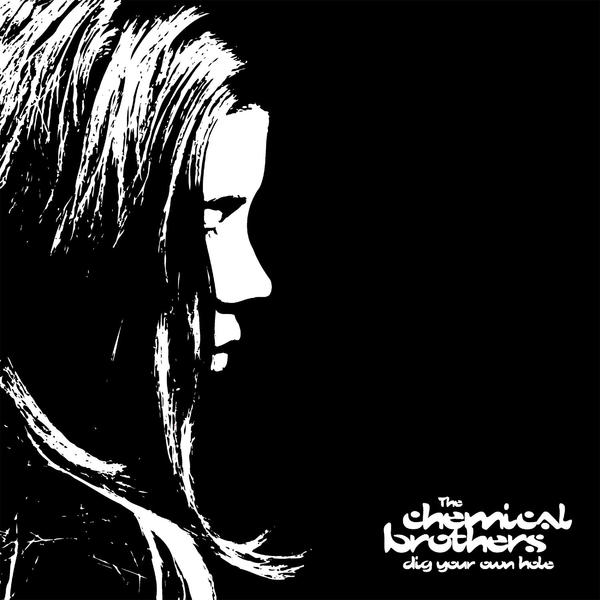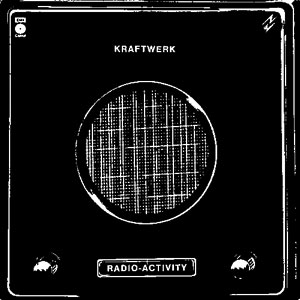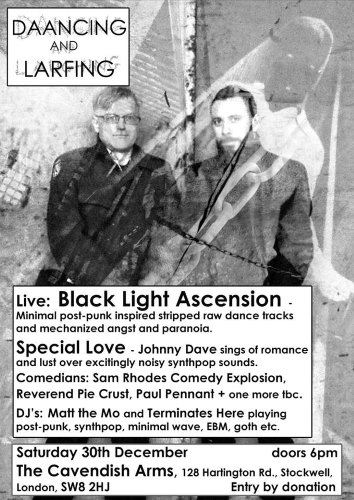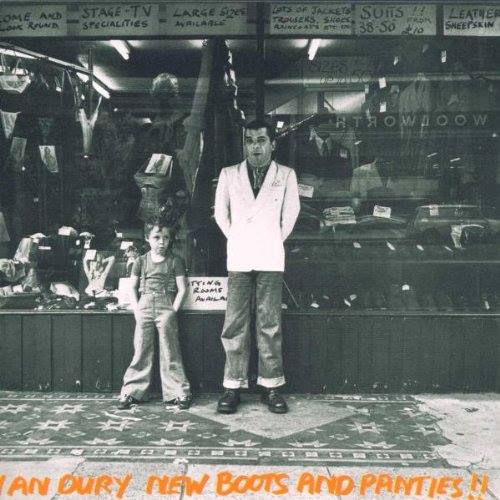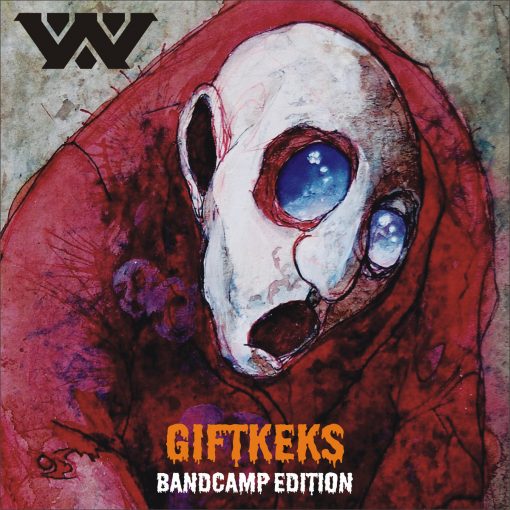Day 11 – Blutengel – Seelenschmerz
Another band which would have featured more in my past writing had they not spent the past few decades just making the same album over and over. But they wouldn’t have done that had they not hit upon a winning formula at some point. And the second Blutengel album (the fourth if you count the two Seelenkrank albums before) is where it all the pieces came together.
Chris Pohl’s brand of Euro-synthie-goth isn’t too hard to get into – you either suss out what he’s doing right away or you don’t. Songs in English, songs in German, female vocals, male vocals, references to vampires, death, souls and all the other goth standards. Dance-able beats, warm synth texture, pretty melodic bits and instrumental interludes which, for now at least, still serve a purpose. Nothing wrong with giving people what they want.
And there’s plenty of highlights – depending on which club you frequented, you might have danced to the mid-tempo stomp “Bloody Pleasures”, the slap-bass vamp-fantasy “Children Of The Night” or the the rich expanses of “Soul Of Ice”. And there’s a lot more to enjoy – I’ve always gone for “I’m Dying Alone”, though it might be the fact I’m a sucker for octave basslines and a certain chord progression. You might fall for another.
Whilst every Blutengel album since always had one or two songs I really liked, the hit-rate was never as good as it was here, with frequent changes in the female singer role hurting subsequent albums and live shows until they settled on the Chris & Uli pairing a few years later, and by then they’d exhausted the idea pool.
Day 12 – :Wumspcut: – Embryodead
This one is slightly shorter as I’ve already written extensively about Wumpscut in recent times. This is also a trigger warning for those of a nervous disposition – I’m touching on darker-than-usual topics here. After all, the Listener’s Guides have to be at least one step removed from the personal connection I feel to certain albums – no holds are barred here. This one made it’s mark (maybe it’s scar) before I’d even played it. I mean, this is the dedication in the CD inlay:
“(Embroydead) is dedicated to all foetus acting wisely enough to die in their mother’s womb before they could be thrown into this cruel world of blind hate. May they never know how hard it is to live without any reason, without any sense…”
I hardly need tell you that there is something seriously disturbing about this album – the fact that I first heard it during a particularly low time for me (2001) just amplified it’s impact. The title track, for instance, was the first of many things that told me “don’t have children”. And that repeated refrain “without any reason, without any sense” was forever lodged inside my head. That creepy use of “London Bridge Is Falling Down” at the albums close is another association forever made, another bit of innocence lost.
“Is It You?” was like a song set as a horror movie before I’d really discovered the genre, “Golgotha” a reminder why I was a man without religion. And “Angel”. Those chimes chill me ever time I listen to it, and the idea that one should desire to clip the wings of the heaven sent is a ethical lesson in the least expected location.
Day 13 – Front Line Assembly – Tactical Neural Implant
Those of us who know the history of Vancouver industrial will know that Bill Leeb first rose to fame as an early member of Skinny Puppy. Front Line Assembly was his post-Puppy project, but I’ve been around long enough in this scene to know how many ex-member bands disappear into obscurity soon after formation. FLA didn’t disappear. When Rhys Fulber joined for the ‘Caustic Grip’ album, the classic lineup was in place – indeed the oldskoolers among you might have wished I had covered that one instead.
But it was 1992’s ‘Tactical Neural Implant’ that secured the widespread acclaim necessary for FLA to be accepted as a major industrial scene name in their own right and not one of umpteen band-involving-people-connected-with-Skinny-Puppy. It was fortunate for me that this was the first work by this band I heard, not knowing the best place to start and having to take a lucky dip in one of those strange CD stalls in the hidden corners of Kensington Market. All I knew was Rhys Fulbers production and remixing credits for Fear Factory, and when Kerrang! (yes, them) mentioned the name of his ‘main project’ when reviewing ‘Remanufacture’, I knew I had to hear them somehow.
And I wasn’t disappointed. It was like I’d found a type of music I secretly hoped existed but wasn’t sure how to find. The band name made my visualise some kind of factory – and this one was the sound of evil cybernetic beings assembling the machines that would allow them to take over the universe. Those mechanical beats, angry basslines, droning vocals and layered effects a far cry from the ‘oh so cool’ electronic music that was accessible to your average late 90s student.
“Mindphaser” is the obvious hit, but it’s proof that Bill and Rhys were never so elitist as to deny their fans an out-and-out anthem. It’s one of only eight tracks on the album, a pleasing focus on quality over quantity as there isn’t a dud among them. A personal favourite of mine is closing track “Lifeline” – mainly because its lingering feeling of loss shows Bill Leeb’s human side – even the most mechanised of machine musics still have real people sitting behind it all as a creative force.
Day 14 – In Extremo – Sünder Ohne Zügel
It’s time to bring mittelalter to the party. (Actually, correction – mittelalter IS a party!). I discovered this band, as well as Tanzwut and Schandmaul (and by extension, this whole style of music) at M’era Luna 2002, my first taste of scene festivals, German style. The idea that metal might hybridise with bagpipes and other traditional instruments was one only touched upon by the English-speaking bands (at the time I only knew of a Korn track with them). Turns out the Germans have a lot more time for this kind of thing.
Of course, in an era where this style of music simply wasn’t sold in the UK and online CD retail didn’t cross borders as well as it does now, I was, for a while at least stuck with this one album that I’d picked up on the way home from the festival. But it was enough to convince me I was onto a good thing – and hence set me on a mission to pick up the remainder of their backcatalogue as soon as I could.
This albums is also proof that genre hybrids are only worthwhile if they amount to more to the sum of their parts. In Extremo mittelalter elements aren’t unique to them – deeply embedded in folklore, the verses and melodies have been practised by many acts – just wander down to the ‘Dorf the next time you make it to WGT if you want to enjoy that kind of thing all day. And as a metal band, it has to be said that they’re not doing anything revolutionary in the riff department. But put the two together and the magic happens.
The opening track “Wind” is a demonstration about how a standard-issue metal number can be brought to life with a piper’s fanfare. “Lebensbeichte” and “Omnia Sol Temperat” both set Carmina Burana verses to the bands own music. Another standard text for the genre is the Merseburg Incantations, which here takes on the feel of an folky rock epic done the InEx way.
But the adaptation of a François Villon poem “Vollmond” is where the true rock-meet-folk intersection occurs, but I didn’t get it’s significance for another two years. Because in 2004, I went back to M’era Luna, and saw In Extremo once more. And they finished their set with this song. And EVERYBODY around me was singing it.
It’s a collective spirit that the current times have denied us, but if these verses have stood the test of time and are still considered worth of adaptation to the current era, then all the stuff we like will easily live through the enforced hiatus of the next few months.
Day 15 – Type O Negative – World Coming Down
Now to face up to the ‘you picked the wrong album, Jonny’ once more. And I do admit the Drab Four’s biggest hits are to be found elsewhere. But as an album, it’s the point at where their gothic doom mission reached it’s apex. Some of the songs ooze from the speaker cones at such a languid pace that you wonder if they’ll ever actually end. The cover photo of the Brooklyn Bridge bathed in ‘creepy green light’ a fine metaphor for how some of these songs just go on and on into the distance. And that’s the whole point. Epic length compositions weren’t new for Type O, but by this point, it actually seemed wrong that they still put out a couple of radio edits. I mean, who’d play THIS on the radio?
Sure, there’s a couple of lighter moments – the pyromaniac fantasy “Pyretta Blaze” the most notable. But it’s the drawn-out epics we’re after – “White Slavery” is black humour in the Peter Steele style – a statement about cocaine addiction with some of his finest wordplay to date. “Everyone I Love Is Dead” and “Everything Dies” are more personal statements about loss of loved ones, but it’s the title track, over 11 minutes in length and worth every second, that truly sums up the feeling of a life gradually coming to pieces.
Indeed, it’s known that Peter Steele felt this album was a little too close to his personal experiences and hence it’s songs weren’t played live as often as those from the previous two. But it works better a slow, long, listen anyway – on an conceptual level, it’s certainly their strongest work, even if it’s one I’ve never really been able to splice into a DJ set.
2003’s ‘Life Is Killing Me’ saw a return to a-collection-of-individual-songs, and we’d only get one more album after that before Peter’s far-too-early departure from this world. The fact that no-one believed it at first would have appealed to his dark sense of humour, but we still lost a musical giant (literally and figuratively) as a result.
Day 16 – Suicide Commando – Mindstrip
There’s a part of me that really wants to post one of the first two Suicide Commando albums, as I believe they’re sadly ignored outside of ‘See You In Hell’ by many people who otherwise regard themselves fans of this project. But on closer inspection, that era of the project had a sound closer to that of fellow Belgian Dirk Ivens (they even collaborated once). If you want to know the point where Johan Van Roy really established his lasting style, and brought real anger to club playlists otherwise dominated by futurepop a couple of decades ago, ‘Mindstrip’ is the album you want to hear.
It’s most notable as the point where Johan found his melodic sense – indeed, the two biggest hits from the album – “Hellraiser” and “Love Breeds Suicide” share a related motif, deployed in different ways to brutal effect in both cases. And it’s on this point that the album as a whole succeeds, Johan more often than not able to maintain a thread of accessibility amid the ultra-distorted vocals and beats, be the slow stomps of “Body Count Proceed”, the klaxon call of “Raise Your God”, the pizzacato keys of “Comatose Delusion” or the mid-tempo grind “Mind Stripper”. Indeed, of the ten tracks, only “Run” provides a reference back to the more minimal works of times past.
Eventually this “harsh EBM” sound became more and more prevalent and hence became less and less appealing – certainly it was a reason why I spent time away from scene clubs in the late 00s, as it was a style of music very easy to do mimic once you knew what VSTs to use. But whilst Suicide Commando had a similar fanbase and appeared in the same DJ setlists, the more subtle aspects of Johan’s sound were not so easily copied – he was always a step removed from the Hocico and Agonoize wannabes. And there’s something about this album that means I still value it today despite not being an out-and-out scene club DJ, whilst many of it’s attempted copyists have long since been filed away somewhere in lesser played corners of my collection.
Day 17 – Jean Michel Jarre – Rendez-Vous
And now a real rewind, right back to where it all began in the 1994-1995 “Chrimbo Limbo”. Before I even owned a CD player of my own, in fact. I’d already developed a taste for Jarre thank to my dad’s compilation LP and a couple of cassettes. But in the mid-90s, CD was the format to go for, and on one dark, wet night in Romford, a habit began that a quarter of a century hasn’t gotten me out of. This is the zero point.
So why this album first? Why not ‘Oxygene’ or ‘Equinoxe’? It’s a fair question but I’m not sufficiently attuned to my mid-teen mindset anymore to remember and I picked those discs up soon enough afterwards anyway. Suffice to say, I listened to this album a lot. And even today it’s notable. In an era where many of you have celebrated stripped-down synth styles in the guise of minimal wave and post-punk, this is evidence of what happens when you head in the opposite direction. Because this album demonstrates what happens if you apply the big mid-80s production style to purely electronic music.
The Fourth Rendez-Vous is the one that initially one me over, an uncomplicated synth mega-anthem that represented another personal first – it was the first tune I voluntarily learned how to play on a keyboard myself (as opposed to things I learned at school or got from those ‘teach yourself’ guides). The Second Rendez-Vous appears here as a four-part epic – a clear demonstration of Jarre’s classical training in scope and composition, but also writing in a part for the ‘laser harp’ – it might be a (very) glorified MIDI controller and hence could play any sound you wanted, but this and the Third Rendez Vous were the first pieces crafted with live performance on this instrument in mind.
Or were they? Because the main themes from the 2nd and 3rd Rendez-Vous had previously been used in music Jarre wrote for French singer Gérard Lenorman, and the 3rd Rendez-Vous has also featured in his soundtrack for Les Granges Brûlées, a largely forgotten French film from the early 70s. Even some of the 5th Rendez-Vous was developed from the ultra-rare (1 copy) ‘Musique pour Supermarché’. But that’s not to the albums discredit – it really is a Rendez-Vous of Jarre’s musical themes, allowing a wider audience to appreciate aspects of his art that would otherwise been lost in obscurity.
The final Rendez-Vous has a sad story behind it – the sax solo was originally meant to have been the first original composition to be recorded in space, but the astronaut who would have been responsible (Ron McNair) perished in the Challenger disaster in 1986. It would have been a landmark truly befitting Jarre’s technological ambitions, but it was not to be, and hence a studio recording of Ron’s part serves as a music memorial to him.
Day 18 – Nitzer Ebb – That Total Age
I’ve often believed you can tell a Nitzer Ebb fan by which album they think is best. Lovers of elaborate production technique might go for ‘Ebbhead’, those of a rockier persuasion tend towards ‘Showtime’. Those into beat science pick ‘Belief’. Whilst old-school fans would only ever choose ‘That Total Age’. Guilty as charged…..
Having previously covered the cultural impact of this album in my Listener’s Guide, this piece will instead focus on my personal story behind this album. I bought it in one of the outlier branches of the Music and Video Exchange in Notting Hill, living as I did in a student hall of residence round the corner. It has been misfiled (maybe?) under ‘Noise’ and hence has reduced to £2. The stark, Soviet-style cover art appealed to me, so I bought it not really knowing what I’d hear once I got it back to the CD player.
And yes, I became an instant fan. The first thing that struck me was how much was being achieved by so little. One voice, one synth and everything else was percussion – e-drums or metal bashing, it did the job. The songwriting wasn’t that advanced either, setting the old school EBM standard of ‘multiple repeated phrases’. But it’s a lesson in how to produce stripped-down compositions that still have impact. With so few elements to work with, every one them has to count.
Sure, “Join In The Chant”, “Murderous” and “Let Your Body Learn” became the lasting hits, but every track of the album serves a purpose – “Fitness To Purpose” and “Alarm” are little more than rhythm and shouting but are no worse for it while “Violent Playground” a cynical swipe at the thuggish far right (the 80s had this problem too).
In any case, this album was the model for countless Swedish and Anhalter bands, who just set the same concepts to different words, but it’s influence spreads a lot further than that – read my guide to find out more!
Day 19 – The Chemical Brothers – Dig Your Own Hole
Here’s a band who’ve been missed out so far due to ‘vote splitting’ – The Chems have about half a dozen albums which are worth writing about, but it took a while for me to pick which one had that special something to get it over that imaginary line that justifies me cobbling together a few words here. And I’ve gone for this one, because it captures a late 90s zeitgeist as well as any other.
Dance music was all about the sampler back then, and the Chemical Brothers took beats from funk-rock, dirty basslines from post-punk and voices from hip-hop – just to write the lead single and opening track “Block Rockin’ Beats”. And unlike many other dance albums of the time, it’s not just filler from there on. The whole album is one furious journey driven by those trademark chemical beats.
The eight minute expanse of “Elektrobank”, the way “Setting Sun” makes a guest appearance from Noel Gallagher not only tolerable but actually enjoyable, and even after that, the ride doesn’t stop, every track providing a new variation, a new concept. There’s a brief pause for breath with the deep bass groove of “Lost in the K-Hole” and Beth Orton colab “Where Do I Begin” but these are just precursors to the grand finale – “The Private Psychedelic Reel”.
With assistance from Mercury Rev’s Jonathan Donahue, this track is the ultimate example of a slow-builder, the early keyboards joined by a sitar twang – more and more layers join before they drop the beat in and BANG! The biggest Chemical Break of them all. And it just keeps going. And going. Every time you think it’s about to draw to a close, it’s just building to something even bigger.
Perhaps the reason I didn’t pick one of the later albums is that for all their catchy hooks, clever uses of sampling and big-ticket guest singers, they never quite reached the heights of the ‘reel again.
Day 20 – Kraftwerk – Radio-Activity
Again, I might well have chosen the “wrong album” here from a historical perspective, but on a personal level, this has to make it in over all the others. Other than a few low-quality cover versions on cheap synth compilations, I didn’t really know much about Kraftwerk until I was a couple of years into my ‘discover all the big names in electronic music’ tour of music history. And where did my introduction to the true sound of Kraftwerk come from? Brentwood Library. Remember – you used to be able to borrow CDs along with all the books!
Sure, it was the only Kraftwerk album they had, but I found myself drawn to it anyway, the stark monochrome cover art more akin something from one of my A-Level Physics textbooks than a chart-topping albums. Even before I played it, I knew I’d laid my hands on a relic from another age. And when I did play it – it was a form of electronic music I hadn’t previously encountered. With my ears full of sample-heavy late 90s dance and heavily-layered new age material at the time (see previously posts for details), the stipped-down, icy textures of this album stood in stark contrast.
You probably already know the title track – or do you? Most DJs (including me) use that ulta-catchy version from ‘The Mix’ as it is much better suited to club environments. But you’ll never understand that version of the song if you don’t know the original – it’s slow, measured style and it’s it’s pre-Chernobyl ‘neutral stance’ on the subject of nuclear power. It’s important that this song, and indeed entire album isn’t just about radioactive substances, but also about radio communications – what is it with German bands and dual meanings?
The album continues with a combination of proto-synthpop (“Airwaves”, “Antenna”) and sonic experimentation (most of the rest of it), with the finale of “Ohm Sweet Ohm” (yet more wordplay) building from the vocoded intro into one of the most melodic of all Kraftwerk compositions, a forgotten gem from the early years of electronic music. Sure, the albums either side of this might have changed the world, but this one changed me, and for the purpose of this series, that’s reason enough to put it in.


